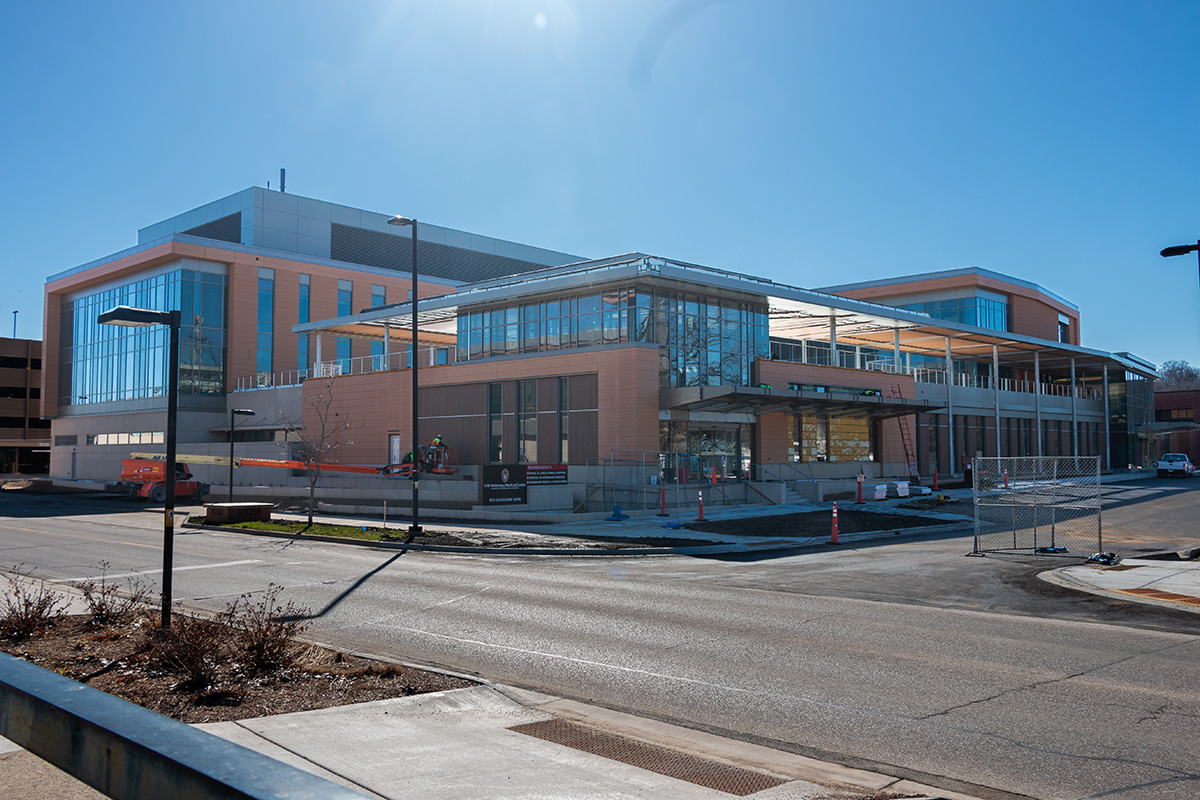UW Vet School Expands
The facility will meet the growing demand for research that benefits both animals and humans.

The expansion doubles the size of the small-animal hospital and triples the area devoted to infectious disease research. School of Veterinary Medicine
The UW School of Veterinary Medicine (SVM) has built a new three-story space — which connects to the existing small-animal clinic — to meet a growing demand for more student learning spaces and veterinary patient care.
SVM was scheduled to open the first two floors of the $174 million expansion in June, doubling the size of the small-animal hospital and tripling the area devoted to infectious disease research. The school is home to 75 percent of the vital infectious-disease research conducted on campus, and it provides quality care for nearly 30,000 veterinary patients per year.
The expansion was made possible by a wide community of benefactors. The project received $90 million from the state, with the remaining support contributed by generous donors such as Debbie Cervenka, a member of the SVM board of visitors. “To be involved and have the ability to provide financial support for this expansion has been a tremendous honor,” says Cervenka. Other contributors include current and former teaching hospital clients, alumni, and pet lovers.
The updated space will greatly expand SVM’s ability to meet the increasing demand for research and care that benefits animals as well as humans. Some of the improvements include research and diagnostic equipment, such as CT, MRI, and PET-CT machines; room for more student learning spaces; an oncology center; and a cardiology suite.
The new facility will house biosafety level 3 lab spaces, which are designed for easy decontamination of potential airborne toxins. According to the Centers for Disease Control, 75 percent of the rising infectious pathogens that affect humans originate in animals, and scientists at the school are on the front lines of investigating infectious diseases such as West Nile encephalitis, avian influenza, and COVID-19.
The 150,000-square-foot construction will also offer student collaboration spaces, acupuncture, internal medicine, general surgery, and an ultrasound suite. The MRI machine is capable of accommodating large and small animals alike.
The third floor of the new building will likely be completed in early 2025, along with an enclosed large-animal arena, remodeled isolation stalls for bovine and equine patients, and renovations to the existing building.
“I can’t wait to see what the future holds for this incredible school,” says Chancellor Jennifer L. Mnookin. “The discoveries and innovations, the graduates who will meet the state’s urgent need for veterinarians, and the compassionate care that will change the lives of our animal patients as well as the lives of the humans who love them.”
Published in the Summer 2024 issue



Comments
No comments posted yet.